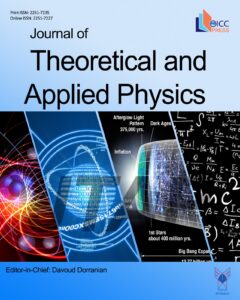Anomaly in the specific heat of lead tellurides
Authors
Abstract
AbstractSpecific heats of two types of lead tellurides, namely p-type Pb1-xSnxTe (x = 0.0, 0.1, 0.3, 0.5, 0.7, 0.9, 1.0) and n-type PbTe doped with y mass% PbI2 (y = 0.0, 0.2, 0.5, 0.8, 1.0), were observed in the temperature range of 50°C to 500°C using a differential scanning calorimeter (DSC). The specific heat of pure Te is also observed in the same temperature range to confirm the dominance of Te. At lower temperatures below 200°C, all the observed data were fairly consistent with those predicted on the basis of Dulong-Petit’s law, while above 200°C, the observed data showed curious temperature dependences. At high temperatures above 200°C, DSC analysis, with the aid of the experiment on pure Te, revealed an anomalously large specific heat that can be predicted from the Schottky defects caused by decomposition and sublimation of Te. In the n-type case, the anomaly in specific heats is rather smaller than that in the p-type case, which fact suggested that the dopant PbI2 may suppress the decomposition and sublimation of Te from lead tellurides.



